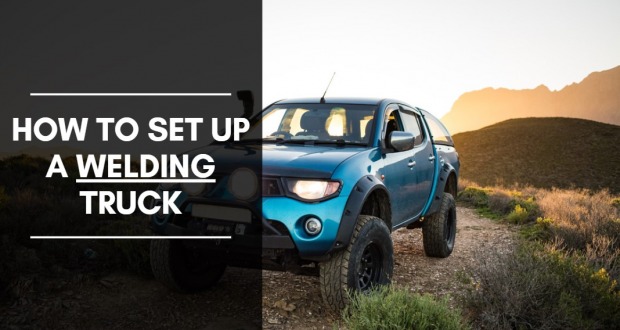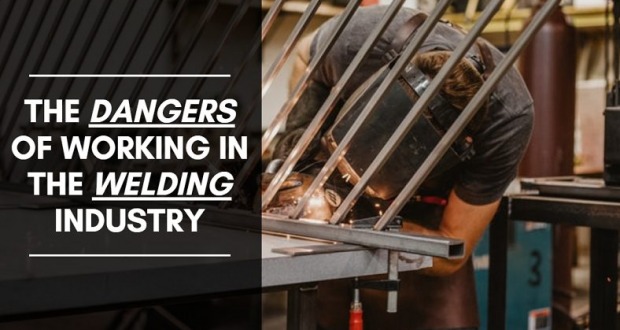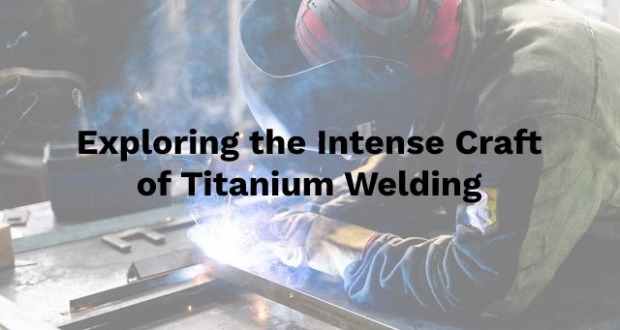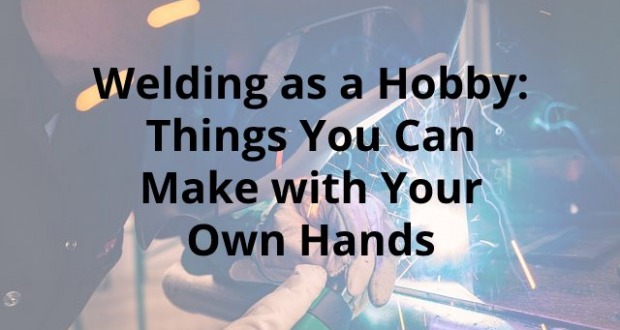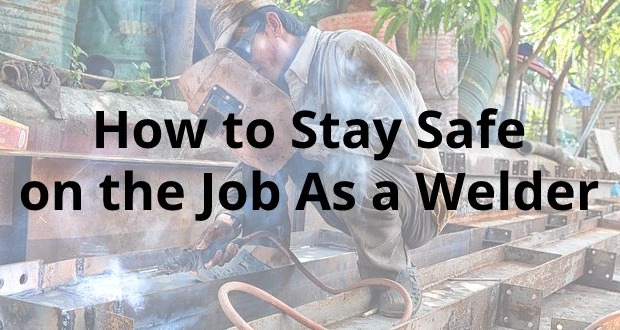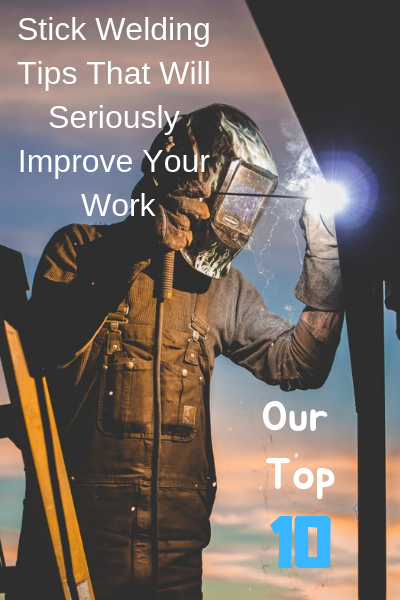
If you’re new to welding, then becoming familiar with stick welding will get you started on the right foot. It is the most common form of arc welding that is used today.
Even though it is a common form of welding, there is a certain amount of skill necessary to create a good weld. Beginners may find that it takes some time to master the techniques that are necessary to create good joints. After all, it is more than a point-and-weld type of system.
Below you will find several stick welding tricks and tips you can use to improve your chances of creating an excellent weld from the beginning. You will also discover information that will help you to identify problems and correct them quickly.
Best Stick Welding Tricks and Tips
1. Always Select “Normal” Steel
Stick welding works best when you’re using steel that has minimal sulfur and silicon content. You’ll find 1015 and 1025 steels tend to work the best for stick welding because their sulfur content is below .035% and the silicon content is below 0.1%. Low-alloy steels, or steel that offers high sulfur or silicon content, will crack on you when you’re trying to weld. Rigid structures and heavy plates are notorious for this.
If you must weld these items with a stick welder, your best option is a low hydrogen, small diameter electrode. Then weld with a slower travel speed to ensure your weld puddle stays molten. This will give you a weld with a better finish, even though it does take some extra time to complete.
2. Choose The Correct Joint Position and Electrode
Your joint position has a large influence on the quality of your finished weld. If you’re welding on 18- to 10-gauge sheet steel, your best travel speeds will come when you’re working on a downhill angle of at least 45 degrees. Do your best not to exceed 75 degrees to maintain the quality of your weld. Make sure that you’re not over-welding or creating an excessively large weld as this will lead to it burning through.
A flat position is recommended for metals that are 3/16-inch thick or greater. That will make it easier to manipulate the stick welding process to your advantage. For high carbon steel or low-alloy plates, they work best when you’re in a level position.
3. Utilize Proper Joint Geometry
When joint dimensions are chosen for welding blueprints, the goal is to maintain professional-quality welds while improving welding speed. To create a proper joint geometry, your fit-up must be consistent for the entire area. Any bevels or gaps must be controlled over the entire joint, even when the joints are tightly clamped. Any variations will force you to slow down your welding speed and increase the chances of a burn-through occurring.
For a good bead shape, you’ll need to have a sufficient level. Without it, the electrode will struggle to reach the joint you’re working on, creating a greater risk of cracking. A good root opening is required for full penetration, but you don’t want too much of an opening, as this will waste your weld metals. The root opening must also be consistent with the electrode diameter.
Your amperage must also be correct.
4. Be Proactive About Your Buildup
With good stick welding, the amount of buildup you experience should never be more than 1/16-inch thick. Your fillets must have equal legs and a bead surface that is virtually flat. When you have buildup, you’re wasting your time and materials. If you double the size of your fillet, for example, then you’ll require 4 times (or more) weld metal to complete the work. Your costs can almost double with over-welding too, even if your excess buildup is 1/8-inch thick or less.
5. Remember to Clean Each Joint Before Welding
Stick welding is not flux core welding. You must remove the extra rust, oil, paint, grease, and scale that is on your metal surfaces before trying to weld a joint. If you cannot remove these contaminants, then you must use an electrode that is designed to penetrate them. The American Welding Society recommends an E6010 or E6011 for this type of job.
If you are welding in an area with rust, moisture, or other quality issues, make sure that you slow down your travel speed. This will give the gas bubbles more time to boil out of your weld pool before it freezes, which improves the overall quality of your weld.
6. Get The Correct Size of The Electrode
For vertical or overhead welding, a 3/16-inch electrode is the largest practical size that you can use. In a low hydrogen environment, you’ll want to step down to a 5/32-inch electrode. Your joint dimensions may limit the diameter of your electrode as well.
As a general rule, however, a larger electrode will weld at a higher current, which means your deposit rates will also be higher. Try to use the largest electrode that you can while maintaining the quality of your weld for the best results.
7. Lower Your Current to Reduce Spatter
Spatter creates an aesthetic issue with your welding. It is not an issue that affects the strength of the weld. It will, however, increase your cleaning costs. One of the easiest ways to reduce spatter is to reduce your current. Verify that your current is in the range for the size and type of electrode that you’re using to weld. You’ll want to verify that your polarity is correct as well.
A shorter arc length when welding will reduce the issue of spatter as well. If you have molten metal that runs in front of your arc, try changing the angle of the electrode. You will want to verify that your electrode isn’t damp and that you’re stopping the arc from wandering as you’re working.
8. Keep Your Weld Pool to a Manageable Size
Another common issue that beginners face when learning how to stick weld is the undercut. Although undercutting tends to be an aesthetics issue more than a quality concern, it may cause a weld to fail when it is placed under stress. You can reduce undercutting issues by keeping your weld pool to a manageable size. Eliminate weaving tendencies from your work. Slowing down your travel speed and reducing your current will also help.
If you experience cracking, try welding with a low hydrogen electrode. You can use a high pre-heat for plates that are heavier, as well as your rigid joints.
9. Use a Heated Cabinet for Your Electrodes
If you are experiencing arc action that seems erratic, rough, or wanders consistently, then you likely have a wet electrode. When one electrode is wet, then there is a good chance that your entire container is wet. Try opening a new container to see if you have a dry electrode to use.
Depending on your climate, you may need to invest in a portable heated cabinet for your electrodes. Using a light bulb, as some websites recommend, will not give you enough heat to maintain dryness. If you already use a cabinet for storage, then the installation of a permanent heater may be a little cheaper than the cost of a portable heater.
If your shop has a good indoor seal, you might find it beneficial to have a dehumidifier available for your shop.
Homes and businesses which live in damp climates, such as the Pacific Northwest or coastal communities along the U.S. South, are most affected by this issue.
10. Higher Currents Reduce the Lack of Fusion Issues
When the bond at a joint receives proper fusion, then strength is provided by both walls to create a solid bead. When a lack of fusion occurs, the joint has no way to be strong. Any time you experience a lack of fusion when welding, you must eliminate it for the weld to be successful.
To correct a poor fusion issue, a stringer bead technique, along with a higher current, may be beneficial. You’ll want to ensure that your joints are clean, your edges are good, and that you’re using an electrode that is designed to get through cleanliness issues.
Some poor fusion issues are also caused by a fit-up problem, so try to create a better fit-up and then create a stronger weld again.
If your poor fusion is due to shallow penetration, then make sure to slow down your travel time. You can try a higher current to resolve this issue too. Smaller electrodes also work better to reach deeper, narrow grooves that affect the overall joint.
By using these different tricks and tips, you’ll be able to resolve many of the issues that beginners face when learning the stick welding process. Keep practicing, stay committed, and be persistent when you encounter issues. Every mistake is an opportunity to learn and is not a reflection of failure.

